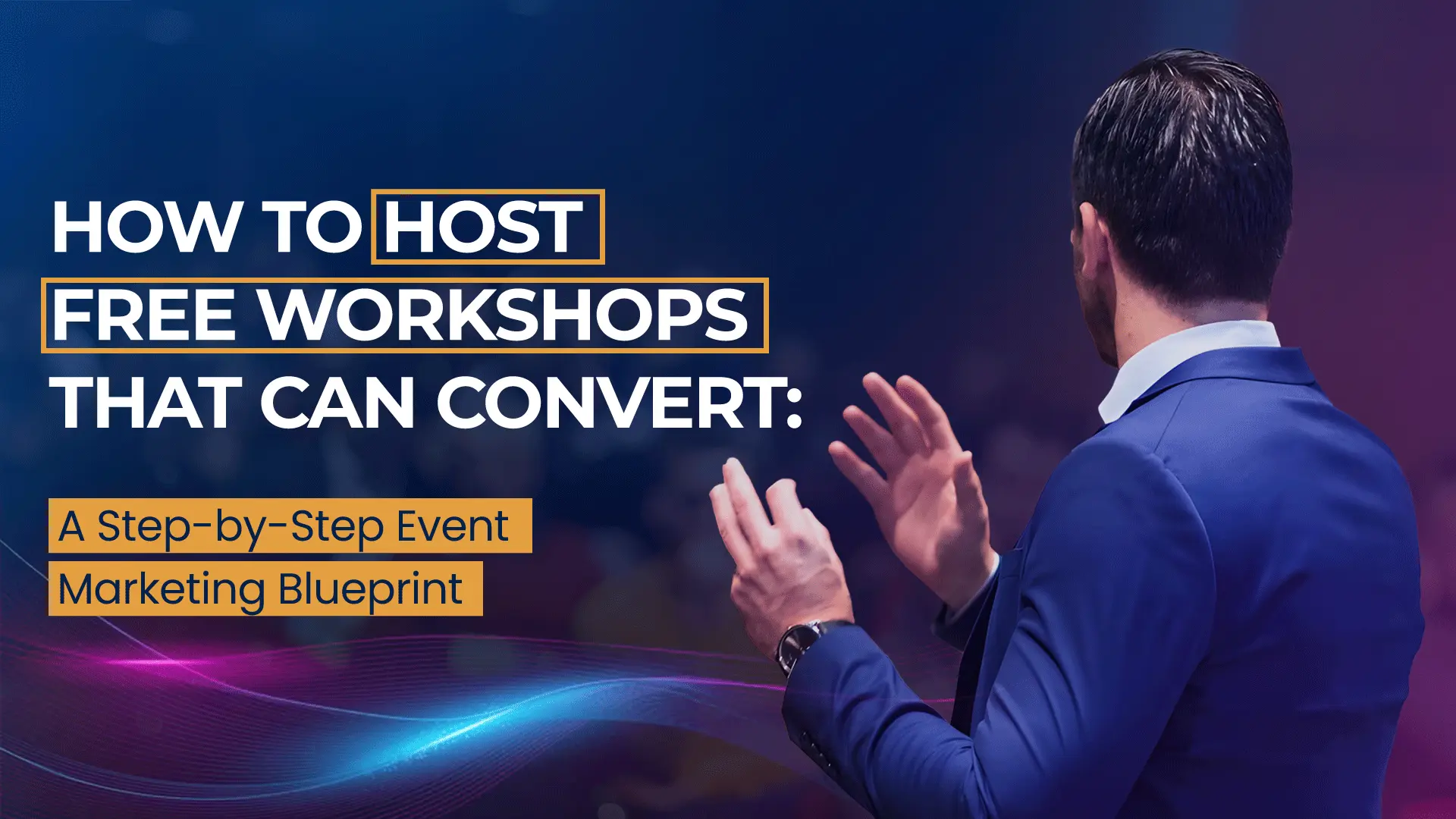The words “free workshop” have been so overused, they almost sound like spam. But here’s the thing: when done right, a well-executed workshop isn’t just a lead magnet. It’s a trust-building machine, a sales primer, and a community accelerator rolled into one.
If you’re in the business of building B2B SaaS products or fantasy sports apps, you can’t afford to host workshops that just generate Zoom fatigue. You need them to convert.
Here’s your no-fluff blueprint to running free workshops that turn passive viewers into pipeline gold.
Step 1: Define the “Conversion” You Actually Want
Before you pick a date or draft a topic, ask yourself: What’s the goal?
Is it:
- Getting developers to start a free trial of your SDK?
- Encouraging startup founders to book a demo?
- Onboarding fantasy app builders into your ecosystem?
- Driving referrals to your paid community or product?
If you’re just chasing sign-ups for the sake of vanity metrics, we kindly suggest… don’t.
Define your workshop success with a conversion action, then reverse-engineer everything else.
Step 2: Choose a Topic That Solves a Real Problem
Spoiler alert: “A walkthrough of our product” isn’t a workshop, it’s a snoozefest.
Instead, focus on outcomes your audience craves. A few example hooks:
- For fantasy app developers: “How to 3x Your App Retention Using Real-Time Stats Integration (Without Rebuilding Your Backend)”
- For SaaS founders: “The Growth Loop Playbook: How Free Tools Can Become Your Best Performing Funnel”
Great workshops solve pain points and subtly introduce your product as the solution. Not the other way around.
Step 3: Structure Your Workshop for Engagement (Not Monologue)
People don’t attend live workshops for passive consumption, they want access and interaction.
Ideal Structure:
- Welcome & Why This Matters (5 mins)
Hit the pain point. Frame the outcome. - Tactical Teaching (20–30 mins)
Use live demos, real case studies, and no-fluff frameworks. - Live Q&A (10–15 mins)
This is where most of your leads will identify themselves. - Soft CTA (5 mins)
“Want help implementing this? Here’s what we offer.”
Pro tip: Add micro-interactions every 5–7 minutes (polls, questions, breakout chat). It’s not just engagement—it’s data.
Step 4: Promote Like It’s a Product Launch
You’re not “inviting people to a Zoom call.” You’re offering transformation.
Promotion Channels to Prioritize:
- Email: Warm leads, existing users, past event attendees
- LinkedIn Organic: Teaser content, carousels, speaker intros
- Slack/Discord Communities: Announce inside niche groups
- Paid Ads (only if you’ve validated the format): Retargeted campaigns to site visitors or webinar lookalikes
- Referral Incentives: “Bring a friend, get bonus templates/tools”
And of course—don’t forget the automated reminder sequence (day before, hour before, and 10 mins before).
Step 5: Create a Conversion-Ready Follow-Up System
The real conversion rarely happens live. It happens after—when leads are warmed up and looking for what’s next.
Must-Have Post-Workshop Assets:
- Replay Page with CTA: Don’t just share a Zoom link. Host it on a branded landing page with a “Book a demo” or “Try now” CTA.
- Follow-Up Emails (segmented):
Attended + Engaged: Book a call
Attended + Passive: Share key takeaways + offer free resource
Registered + No-show: “Sorry we missed you” + replay + CTA - Retargeting Ads: Push testimonials or product demos to attendees
Your follow-up system should run like a sales pipeline on autopilot.
Step 6: Turn the Workshop Into a Content Engine
Don’t let all that effort vanish after 60 minutes on screen.
- Chop it into short-form videos for LinkedIn or YouTube
- Turn insights into a blog post (like this one)
- Extract quotes into carousels or email nuggets
- Use poll responses or Q&A highlights for future content
Repurposing isn’t optional. It’s what turns one free workshop into weeks of high-value marketing fuel.
Real-World Scenario: Togwe’s Developer-Focused Workshop
Let’s say Togwe launches a new analytics feature for fantasy sports apps. Here’s a simplified blueprint:
- Workshop Topic: “How to Build Player Engagement with Real-Time Stats and Custom Leaderboards”
- Conversion Goal: SDK trial sign-ups
- Promotion: Outreach to fantasy app founders, product managers, and devs in Slack groups
- Event Flow:
Live demo + real user case study
Poll: “What’s your current retention rate?”
Live Q&A with CTO - Post-Workshop Follow-Up:
Replay page with SDK integration checklist
CTA: “Book a call with our integration team”
Retargeting ads using workshop testimonials
End result? Leads that are qualified, educated, and primed for action.
Final Thoughts
Free workshops, when executed with precision, are more than just “top-of-funnel” events. They’re relationship accelerators, objection crushers, and conversion vehicles—especially when tied into a broader strategy like the ones Togwe builds for B2B and app-based brands.
You don’t need a bigger budget. You need a better blueprint.
Need help creating workshop funnels that convert?
Togwe helps brands design end-to-end event experiences—from strategy to follow-up—that educate, engage, and drive measurable growth.
Let’s build your next conversion engine—one workshop at a time.
FAQ’s
How long should a free workshop be?
Aim for 45–60 minutes. Long enough to deliver value, short enough to respect people’s calendars. Bonus: You get better attendance and higher replay views.
Do I need fancy tools to host?
No. Zoom + a clean slide deck + a well-thought-out script can outperform overproduced webinars. That said, tools like Demio, Hopin, or WebinarJam can elevate the experience.
How do I ensure people actually attend?
Automated reminders, clear value props, and calendar integrations. Also: Consider giving early access or bonus resources only to live attendees.
Should I gate the replay?
Only if your goal is lead gen. If you're nurturing warm leads, ungated replays with embedded CTAs may actually convert better.

